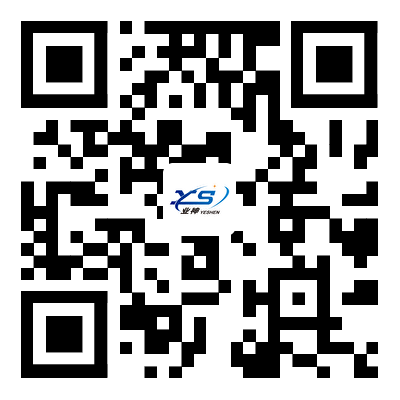What are the applications of shoe and clothing sorting grid chutes in e-commerce logistics warehouse
In e-commerce logistics warehouses, the shoe and clothing sorting chute is a key equipment for achieving efficient sorting of shoes and clothing. It can guide shoes and clothing correctly to the corresponding chute according to factors such as size, weight, and sorting path, thus completing the sorting operation. Its main applications are as follows:
1、 Automated sorting line end grid
App
In e-commerce logistics warehouses, the shoe and clothing sorting chute is a key equipment for achieving efficient sorting of shoes and clothing. It can guide shoes and clothing correctly to the corresponding chute according to factors such as size, weight, and sorting path, thus completing the sorting operation. Its main applications are as follows:
1�、 Automated sorting line end grid
Application scenario: Connect the end of automated sorting equipment (such as cross belt sorting machines, slider sorting machines) to sort shoes and clothing according to orders or destinations to different compartments.
Advantages:
Efficient sorting: Through the inclined angle and curved design of the chute, shoes and clothing can quickly slide into the grid opening, reducing sorting time. For example, when a cross belt sorting machine is paired with a chute, it can process thousands of shoes and clothing items per hour.
Protection of goods: The inner wall of the chute is made of smooth materials (such as stainless steel, plastic) or equipped with cushioning pads to prevent wear and deformation of shoes and clothing during sliding due to friction or collision (such as leather shoe scratches and clothing wrinkles).
Flexible adaptation: Different lengths and slopes of chutes can be designed according to the spacing and height difference between grid openings, to adapt to dense grid layout (such as temporary grid openings added during e-commerce promotions).
2��、 Manual sorting table auxiliary grid port
Application scenario: In the manual sorting area (such as return sorting, small batch order sorting), it serves as a guiding channel for manually placing shoes and clothing.
Operation method:
Sorting personnel place shoes and clothing into the chute entrance, which automatically slides down to the lower level grid or conveyor belt, reducing manual handling and bending movements, and lowering labor intensity.
Can be paired with an electronic tag (Pick to Light) system to indicate the position of the grid through lighting, improving the accuracy of manual sorting.
Typical case: A certain e-commerce warehouse sets up multiple levels of chutes in the return processing area. The upper level manual sorter puts the returned shoes and clothing into the corresponding chutes according to size and category, while the lower level grid is directly connected to the storage box or secondary sorting line, achieving a "top-down feeding and bottom-up" assembly line operation.
3、 Multi floor vertical sorting grid
Application scenario: Used for vertical sorting in multi-level warehouses, guiding shoes and clothing from the upper sorting area to the lower temporary storage area or outbound port.
Design points:
Spiral groove: When the vertical height is large, a spiral groove (similar to a spiral staircase) is used to reduce the sliding speed through a gentle spiral curve, avoiding damage to shoes and clothing due to high-speed falls. For example, a 3-level warehouse uses spiral chutes to connect the sorting tables on each level, ensuring the safe sliding of shoes and clothing even when the drop reaches 6 meters.
Segmented buffering: Long distance chutes can be equipped with multiple buffering nodes (such as horizontal sections and damping barriers) to control the sliding speed and facilitate the interception of abnormal items (such as dropped shoelaces and packaging bags) midway.
Advantages: It can replace traditional vertical elevators or manual handling, saving space and equipment investment, especially suitable for e-commerce warehouses with high floors and large fluctuations in sorting volume.
4�����、 Special scenario applications
1. Cross border e-commerce sorting
The chute can be set with compartments according to the "customs clearance requirements", such as importing shoes and clothing that need to be inspected into specific compartments, connecting independent packaging lines, and achieving compliant sorting of cross-border orders.
2. Mixed inspection and sorting of shoes and clothing
In the quality inspection process, the chute can serve as a channel for removing non-conforming products. For example, after quality inspectors discover defective shoes and clothing, they guide them into the "rework" or "scrap" compartment through a chute and separate them from qualified products.
3. Temporary sorting for promotional activities
During the big promotion period, temporary chute slots can be quickly added to cope with the surge in order volume. For example, through modular design of detachable chutes, the deployment of 20 new compartments can be completed within 2 hours to meet the sorting needs of limited time promotions.
5�、 Linkage application with other devices
Intelligent warehousing system docking: The chute grid can integrate sensors (such as photoelectric switches and weighing sensors) to provide real-time feedback on the grid status (full/empty, abnormal weight), and adjust sorting strategies in conjunction with WMS (Warehouse Management System). For example, when a certain grid is about to be fully loaded, the system automatically switches the sorting path to the adjacent grid.
Automatic packaging line connection: The end of the chute is directly connected to the automatic packaging machine. After the shoes and clothing slip off, they immediately enter the weighing, labeling, and packaging process, forming an integrated "sorting packaging" operation and shortening the order processing cycle.
 0512-52430590
0512-52430590
 0512-52430590
0512-52430590

 WeChat number:業(yè)神物流設(shè)備
WeChat number:業(yè)神物流設(shè)備
